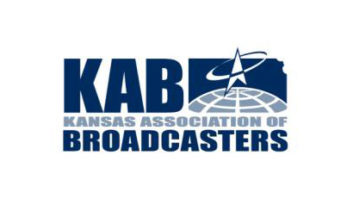Things have sure changed over the past year. The first few months of 2009 have not been kind to our business. Along with shrinking revenues we have seen layoffs, pay cuts and slashed budgets. We are all being asked to do more with less.
In the radio business, engineering often is viewed as a necessary evil; indeed to some degree it is. Of course we know that without a properly engineered and reliable facility, a radio station cannot successfully compete. And yet it is hard for some to make the connection between the costs of engineering and station revenues. With revenues falling, the pressure is now on to reduce those costs.
The good times of recent years, along with advances in technology, have changed the way engineers work. Think about it for a minute. In recent years, other than transmitters, how many pieces of equipment have you repaired in your shop and how many have you returned to the manufacturer or sent out to a repair depot? Why is that?
MODULE SWAPS: EFFECTIVE BUT EXPENSIVE
Part of the issue is technology.
Much of our modern broadcast equipment is constructed in a way that makes it difficult to troubleshoot in the field, much less repair.
Manufacturers have geared themselves to swapping out modules and circuit boards rather than the traditional model of supporting the engineer in the field with repair parts.

Radio engineers will have to dust off rusty troubleshooting skills. And let’s be honest here: Most engineers have enjoyed this arrangement. It has freed us from the time-consuming process of troubleshooting and repair down to the component level. From the manufacturers’ perspective, it eliminates a lot of the “over-the-phone training” that often takes place when one of their customer support techs has to talk a relatively unskilled person at the station through the troubleshooting process.
Except for the expense, it’s been a good arrangement for a lot of folks.
Another reality is that many of the subassemblies used in today’s broadcast equipment are no longer even made at the factory where the transmitter, mixer or other equipment is assembled. Power supplies, power amplifiers and other major subassemblies are purchased by the equipment manufacturers and assembled in the equipment.
My company recently purchased a couple of new transmitters from a major manufacturer that has been around the broadcast transmitter business for a lot of years. Open the back door of these units and you’ll find entire subassemblies with another manufacturer’s name on them. Generally speaking, these subassemblies are not field-repairable. Even the transmitter manufacturer simply swaps them out, sending defective or damaged units back to the source for repair.
The problem with this equipment support model is that it is expensive. In recent years, I’ve had repair invoices cross my desk that I just about choked over. So much of this kind of thing is done at a “flat rate” or on an exchange basis.
With the “flat rate” model, the repair charge is a fixed amount no matter what, whether it involves only the change of a 29-cent resistor or a $300 DSP chip. The flat rate is set high enough that the manufacturer or repair depot will always make money.
The exchange model is internally similar. For a fixed amount, the manufacturer will swap your defective module with a ready repaired and tested module. The manufacturer then repairs and tests the defective module for the next customer.
Whichever model is used by a manufacturer, the customer pays for the convenience, and this does nothing but add to the “cost center” image of radio station engineering departments.
DIY
As we face a tightening economy, to remain financially viable we are going to have to find ways to reduce these costs, and one way has to be getting back to the in-house repair model. That’s not possible with every piece of equipment, but it is with a good many.
This process begins with directing our mindset away from what we have become accustomed to. Our thinking has got to be that we will make every effort to repair the device ourselves; factory repair becomes the last resort.
We’re going to have to clean off our workbenches. Many times, I walk into the engineering “shops” of our station clusters and find the workbenches covered with everything; the bench is used for anything except the repair of equipment. Tools and test equipment are nowhere in sight — who needs them?
We’re going to have to remedy that. Get the tools organized and the test equipment — DVM, oscilloscope, etc. — arrayed and ready to use in a hurry.
And we might do well to invest in some tools and soldering equipment (and a lighted magnifier) to work on surface-mount technology (SMT) circuits and components.
Some of this might require a “sales job” on station management, explaining that modern circuit construction techniques require specialized tools and equipment to repair. The old pencil-iron and needle-nose pliers may not be adequate for a lot of today’s equipment.
Next, we’re going to have to dust off our rusty troubleshooting skills.
This may be the biggest mental hurdle for many of us. Because we haven’t done a whole lot of component-level troubleshooting in a while, we may think we’ve lost the touch, and this is probably true to some degree. But like a lot of other skills, these will return with use quickly.
I have sat at a desk for a lot of years. It’s been close to 15 years since I have done any serious troubleshooting and repair work.
Early this year, one of our transmitters on the West Coast was giving us no end of grief, something in the control circuits, and at the request of the station chief engineer, I hopped a plane west to have a look for myself.
As I began probing the circuit board, I initially was apprehensive; but I gained confidence as I worked my way through the circuit, following signals through gates, comparators and logic circuits.
Before too long, I found where a signal simply disappeared. It was present on the end of a pull-down resistor on the input of an inverter but was not present on the inverter input pin. In the final analysis, a solder joint that looked perfectly good was a perfect insulator. Re-soldering the joint fixed the problem and got the transmitter running again.
Those long-unused skills quickly came back to me with a little exercise, and I found myself enjoying it.
Another consideration is a ready supply of replacement parts. In most locations, the days of running down to the local supply house and getting the needed parts are long gone.
In Denver where I make my home, good luck finding a real electronic parts supply house! I suspect the same situation exists in many other locations.
We have come to rely on Mouser, MCM, DigiKey and the like for our parts needs. These national vendors carry a huge stock from a wide selection of manufacturers; but it takes time to place the order and have it shipped in. Adding overnight freight to the order just runs the cost up.
A better solution is to maintain a ready stock of the “usual suspects.” You should have a good assortment of 1/4-watt carbon resistors on hand in all the standard values from 1 ohm to 1 megohm. I would think you should also have a good assortment of SMT resistors on hand as well. A good selection of electrolytic and tantalum capacitors along with a few SMT capacitors should also be in the parts bin. That takes care of the “generic” stock.
Then you need to maintain a list of the parts that commonly fail in equipment that you maintain. “Mission critical” parts, one or two of each type of semiconductor for example, should be kept on hand for transmitters and other key pieces of equipment. When you use a part from this stock, immediately order a replacement.
Watch for parts obsolescence. Many times, production will cease on a particular key part.
I remember back in the mid-1990s, a particular voltage-controlled amplifier IC that was used in a then-popular audio console went out of production. The only replacements available were those on hand at the console manufacturer, and that stock quickly was depleted, essentially orphaning the console. Some engineers were watching and knew this was about to happen. Those individuals were able to order in a good stock of replacements, keeping their consoles running for many more years.
Finally, we have to train the next generation.
How many engineering assistants working in today’s stations and clusters have primarily IT training? Do these folks, even if they have basic electronics training, know how to troubleshoot to the component level? Unless someone has taken the time to teach them the art, their troubleshooting skills are likely limited to “point and click” and wholesale equipment/module swaps.
Don’t miss the opportunity to show these up-and-comers how to do it.
Unless we get back to DIY repairs of our studio and transmitter equipment wherever possible, we consign our engineering operations to becoming shipping departments rather than engineering departments, and that in turn impacts our value to our employers.
We can’t fix everything in the field, but where it makes sense, we’ve got to try. In the process, maybe we can stretch just a little more life out of some of our equipment. That’s worth something in the eyes of station owners and stockholders.
That is what we’re all going to have to get back to in this tough economy. By repairing everything that we can in the field, we’ll save our employers a bunch of money, increase our value to them and reduce our “cost center” image.
In the process, we just might find ourselves with a sense of satisfaction in our jobs that we haven’t felt in a long time.
Cris Alexander is the director of engineering at Crawford Broadcasting Company and the SBE’s Broadcast Engineer of the Year.












